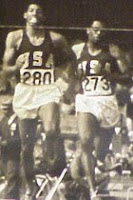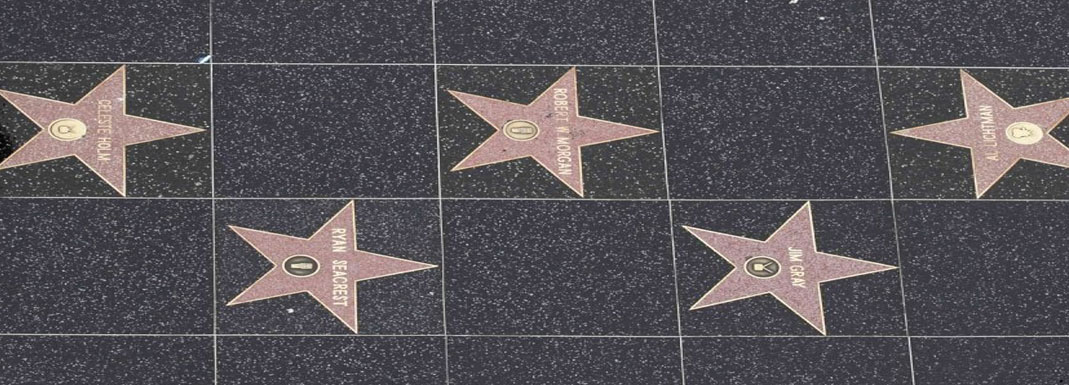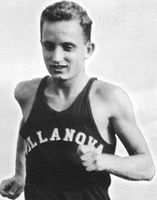I Know Mental Toughness When I See It
Without a doubt, the most common lament I’ve heard from runners in over

25 years of coaching is: “Coach, I wish I was mentally tougher out there today. I know I could have done a lot better.” Over the years I’ve heard scores of runners blame disappointing performances and not being able to reach their race goals on a perceived lack of their own mental toughness. Exactly what is “mental toughness?” I define mental toughness as the ability to use self-discipline to get the best possible physical performance from your body on that day.
I know mental toughness when I see it:
Alberto Salazar pulling away from
Rudolpho Gomez in a cloud of dust after 24 miles, at sub-5 minute mile pace to win the
1982 New York Marathon. Lasse Viren getting knocked down, lying motionless, and then getting up to set a world record in the 1972 Olympic 10,000 meters. Bill Rodgers winning the 1975 Boston Marathon despite stopping to tie his shoe. These are just some examples that come quickly to mind. I’ve also seen mental toughness displayed from the high school runners I coach, sometimes when least expected: A freshman girl out-kicking senior runners in her first cross-country race, or a senior boy runner running negative splits and getting his best time in hurricane-like conditions. I’ve often wondered where the mental toughness comes from to rise above the ordinary.
Shakespeare may have framed it best when he said, “Be not afraid of greatness. Some are born great, some achieve greatness, and others have greatness thrust upon them.” Is the

nature/nurture argument the same with mental toughness? Are runners born mentally tough or do they “have it thrust upon them”--and if so, how? First, a disclosure: Our family crest is a yellow chicken with a French inscription “Espere Mieux”. If mental toughness runs in our family it appears it may have skipped the generation when our family crest was inscribed!
Think about the races you have run where being mentally tough allowed you to rise above the pedestrian, above your perceived level of fitness to greater accomplishments. Maybe even to beat someone who you believed to be better. Wouldn’t it be great to know how to draw upon that same mental toughness at will? I decided to consult some of our all-time top runners for their views on mental toughness.
What exactly is mental toughness as it relates to running? According to Olympian and author
Jeff Galloway: “The brain has two hemispheres that are separated and don’t interconnect. The

left-brain tries to steer us towards pleasure and away from discomfort. The intuitive-creative right side connects us to our hidden strengths.”
By preparing mentally for the challenges you expect, you will empower the right side of the brain to develop mental toughness. As we accumulate stress, the left-brain sends us a stream of messages telling us to “slow down,” “stop and you’ll feel better,” “this isn’t your day,” and even “why are you doing this?”
What is mental toughness?
According to 1983 Boston marathon winner

and American record holder at 10 miles
Greg Meyer, mental toughness is one of the most important ingredients for reaching your potential: “I believe totally that the mental makeup of a runner, both over a career and on any given day is about what you called toughness, and what another might call confidence in their expectation of the planned outcome. The belief that one is “ready to run” and is confident in their fitness, allows the athlete to appear mentally tough. Bill Rodgers running the hills through Newton was as mentally tough as anyone—from a belief in his

ability and his goal. When equal athletes compete, it is the one who doesn’t lose focus or waver in their belief who wins.
The toughness of single-mindedness I call it.”
Bill Rodgers thinks the term “mental toughness” is “a description of how well an athlete prepares for the physical and mental challenges of their sport. I like the great Tanzanian marathoner Juma Ikangaa’s comment, ‘The will to win is nothing without the will to prepare.’” Lynn Jennings has said, “
Mental will is a muscle that needs exercise, like the  muscles of the body.”Here are 5 ways to increase your mental toughness:
muscles of the body.”Here are 5 ways to increase your mental toughness:
First,
create a competitive advantage through your training. Besides the physiological improvement that comes through investing more time in training, you receive a psychological boost if you do a workout that you believe no one else is doing. Hill workouts, negative-split workouts, and short fast repeats at the end of a long run are some of the ways runners look for a competitive advantage.
Galloway believes that incorporating mile repeats and long slow runs of 30 miles in his training enabled him to beat more talented runners and make the Olympic team. Bill Rodgers: “Most of my daily runs (two a day) were at a moderate pace (6-7 minute miles for me), but I always ran by how I felt. If I felt decent I would run harder for several miles at a time. This was true for 5 to 25 mile runs. I was trying to teach my body to ‘float,’ that is run as effortlessly as possible in some training runs.”
Finally, train with other runners.
Jumbo Elliott, long-time Villanova coach, was fond of saying, “Runners make runners.” The synergy of proper training with other runners in a supportive (and not overly competitive) environment can take your training to another level while enabling you to run closer to your potential.
Gerry Lindgren, considered by many to be America’s best high school runner ever, ran a 13:44 5000 meters and an 8:40 two mile in high school and beat two World Class Russian runners,

Leonid Ivanov and Anatoly Dutov to win the 10,000 meter event in the US-USSR Track Meet in Los Angeles in 1964. Lindgren used mental toughness to turn himself into a world-class runner:
“I used to do a lot of exercises to increase mental toughness. It was a game I used to play. Every time I went around a curve in training I went to the outside in training runs so I had to run further. I always had to take the hardest longest way to build mental toughness. I chased bikes. I did sprints at certain places in my training runs no matter how I felt. Every time I came to that place I had to sprint! It slowly built up my mental toughness.”
Salazar trained by running hard ¾-mile intervals at the start, middle, and end of his runs. Alberto recalls running against Rudolpho Gomez: “I actually had two races against him in New York—1980 and 1982. The 1982 race was of course the very close race. I remember being scared of his kick, so I tried to soften him up with surges over the last two miles. They worked as I only beat him by a few seconds, and if I’d waited, it might have turned out differently.”
 Second
Second,
train your mind.
Frank Shorter says, “I think simulating racing while interval training is a good way to gain mental toughness. Imagine yourself in the race situation. Then, when you are actually in it, it will seem ‘familiar.’”
I tell the Gloucester Catholic boys and girls cross-country teams I coach that mental toughness is like a muscle that grows stronger through use. Passing someone when you are tired, surging, or starting your kick at a predetermined place—all of these things build mental toughness and make you that much tougher for the next race.
Jeff Galloway recommends fartlek training as a way to enhance mental toughness. Because there are no artificial barriers on time, distance, etc, you reduce the negative messages from the left-brain when things get tough: “Fartlek develops a sense of focus and resource coordination not found in other forms of training. You’ll still get those ‘pings’ from the left side but they won’t bother you as much. Fartlek desensitizes you to the discomfort and uncertainty of pushing and pacing beyond your current limits.”
Bill Rodgers agrees: “I recall using a technique while racing of visualizing an Olympic gold medallist at 10K, who was a terrific competitor; I would emulate his running form to steady myself mentally over the final miles of a race. I think training and racing a lot makes you experienced, i.e. tough as a competitor.”

Salazar says “Back in the ’70s and ’80s, it was felt that one’s mental toughness, resilience, and ability to focus were God given and could not be enhanced. Now, common sense tells us that even the naturally toughest competitors can become more relaxed and more focused through the use of mental and psychological training.”
Relaxation, visualization training, and hypnotherapy are all common psychological training tools. Steve Prefontaine once said: "Most people run a race to see who is fastest. I run a race to see who has the most guts."
Third, make sure you are really giving 100% effort. Larry James, the Olympic 400 meter gold (4x 400 relay, world record) and silver medalist from Villanova and a long-time coach and Athletic Director at Stockton College believes: “You can only give 100%. Whenever I hear

someone say they just gave 150% or 175% effort, I suspect they are usually only giving 80% effort. No one can give or ask for more than 100% effort; it’s impossible, that’s the best you can do.”
If you are able to give close to 100% effort more often than your competition, you will appear mentally tougher than your competitors. Olympian Paavo Nurmi once said: “
Mind is everything—muscles pieces of rubber. All that I am, I am because of my mind.”Fourth, break the race or workout into segments to make it more manageable. For example, author and former AAU champion Tom Osler recommends breaking a race such as a marathon into thirds: “The first third is run easy; the second third you start to get competitive and run at a relaxed pace fast enough to catch runners in front of you. Only the last third is raced at maximum effort.” Osler was also one of the proponents of inserting walking breaks in long runs to make them more manageable.
Our high school runners are taught to start their 5K kick with about a half-mile to go, and to run against the clock. By picking a point in your race in advance where you know you will go hard you are able to embrace discomfort for a manageable amount of time and also to use the element of surprise to appear mentally tough to your competitors.
Also, by not playing it safe emotionally, you will start to perceive yourself as a tough runner. By breaking the race into segments and by concentrating on running as hard as possible in that segment you will increase your mental toughness and test the mental toughness of competitors. Gerry Lindgren would often sprint the first quarter-mile after the four-mile mark of the race

before settling back down to race pace. Very few runners were willing to go with him at that point of the race and Lindgren was often able to break the race wide open with this tactic.
Bill Rodgers: “My friend Andy Palmer used the motto “The Mind is the Athlete” as part of the philosophy he passed on to his athletes. I see talent as physical and mental. I think everyone has the innate ability to be mentally tough; what counts is whether one has the desire to explore that to the best of their individual physical abilities.”
Fifth, use your self-discipline to know when to and when not to push yourself. Knowing that you alone decide when to push and when to hold back can relax you and enable you to ration your energy for use at the right time.
Tom Osler says “the urge to push in extreme weather conditions in pursuit of developing mental toughness is counter-productive.” Osler continues: “You can’t beat Mother Nature. You will run much better, and be able to push harder in a race if you train at the coolest part of the day for example.” Coach and author
Roy Benson adds: “Mentally tough runners have the discipline to

not race in practice in order to ‘win’ the workouts. They can control their urges to run fast at the beginning of workouts or races when the running feels easy, and will not give in to the temptation to slow down when the inevitable fatigue sets in over the last one-third to one-half of the workout or race.”
Where the mind goes, the body will follow.
It turns out the inscription on our family crest translates to a useful slogan for anyone wishing to call on their own mental toughness: “Espere Mieux”--could be translated to “expect or wait for the best.” If you wait for the right moment and expect the best in each running situation that requires mental toughness, you will be much more prepared when you have your own “cloud of dust” moment. You will emerge from the other side victorious because you expected to do well based on your preparation. After all, your mind has already seen you do it before and expects nothing less.






















 Browning Ross was truly the father of road racing in America. He was a member of the U.S. Olympic Track and Field teams in 1948 and 1952, and Pan American Games 1500 meter (metric mile) champion in 1951. He won many hundreds of long distance races through the streets of North American cities. “Barefoot” Charley Robbins, also a U.S. national champion, called Browning the “most versatile runner of all time.”
Browning Ross was truly the father of road racing in America. He was a member of the U.S. Olympic Track and Field teams in 1948 and 1952, and Pan American Games 1500 meter (metric mile) champion in 1951. He won many hundreds of long distance races through the streets of North American cities. “Barefoot” Charley Robbins, also a U.S. national champion, called Browning the “most versatile runner of all time.”